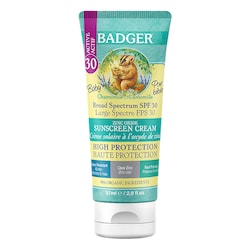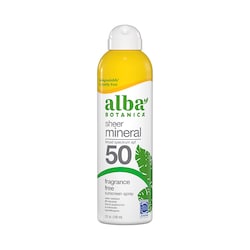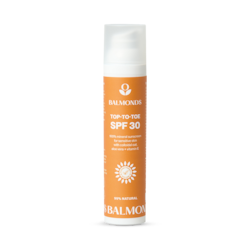15% off £30 OR 20% off £40
Code:DECIDE
How to make lavender oil, spray & water

Find out how to make lavender oil, spray and water. Homemade lavender can be added to everything from cleaning products to skincare.
Summary
1What is lavender essential oil?
Lavender essential oil is known the world round for its gorgeous scent and calming properties. It’s made by extracting oil from the small clusters...
2What is lavender essential oil used for?
Lavender essential oil is one of the most popular essential oils used worldwide. Here are the most popular lavender oil benefits: 1. It can help...
3How to make homemade lavender oil
Here we keep it simple with the cold fusion technique. Step 1: Harvest and dry Step 2: Infuse Step 3: Strain...
Lavender oil has many uses and benefits.
A simple, homemade lavender-infused oil can be added to everything from cleaning products, to your skincare regime, to your cooking.
Read on to find out how to make your own lavender oil.
But first, a distinction. The recipe we share in this article is for a lavender-infused oil.
If you’re interested in how to make lavender essential oil, you’ll need to invest in some extra distilling equipment and have a plentiful supply of the plant.
What are essential oils?
Essential oils capture a plant’s aromatic scent or flavour.
They’re extracted from plant leaves, flowers, roots and bark using distillation or a cold press method.
If they’re made using a chemical process, oils cannot be considered true essential oils.
How to make essential oils at home
Producing a true essential oil involves extracting the oil from the flower via steam distilling. This is usually done on an industrial scale.
Although smaller hobby kits are available, it’s a process that requires caution (due to the combination of heat and pressure), thorough preparation and a sizeable dose of patience.
You’ll also need access to lots of the purple flowering blooms - it takes a lot of flowers to produce even a small amount of essential oil.

What is lavender?
Lavender (lavandula) is part of the mint family and is famous for its lush aroma and vivid purple flower blooms.
It comes from the Mediterranean, but is now grown across the world.
People have been using it for centuries to help people sleep and relax, as well as in perfumes, cosmetics and other herbal remedies.1
What is lavender essential oil?
Lavender essential oil is known the world round for its gorgeous scent and calming properties.
It’s made by extracting oil from the small clusters of vibrant violet-coloured flowers that grow on the top of lavender stalks.
What is lavender essential oil used for?
Lavender essential oil is one of the most popular essential oils used worldwide.
There are lots of reasons why people choose to use it, but here are the most popular lavender oil benefits:
People often use lavender essential oil when they are feeling anxious, e.g. sniffing some lavender from a handkerchief before having to do a speech or have an important doctor’s appointment.
Studies have shown that using lavender oil regularly can help keep you calm and combat a low mood.2,3
Lavender oil is probably best known for helping people to sleep – pillow mist ring a bell?
Research suggests that inhaling lavender oil before you sleep could can help improve your sleep quality.4,5
Lavender contains linalool and camphor, which some bugs really don’t like including ants, mosquitos, wasps, flies and moths.6,7
What is lavender oil?
In contrast, if you’re more interested in how to make lavender oil, this can be achieved simply using excess flowers from your garden borders.
While not as concentrated as a pure essential oil, it brings some of the benefits associated with lavender but without any complicated chemistry.
Which brings us neatly on to how to make lavender oil from the plant in your garden.
Here we share a simple method including what oils to use and how to make lavender oil with leaves as well as the flowers.

How to make homemade lavender oil
First, let’s list a few things that you’ll need to make lavender oil.
- A large jar (for the infusion)
- Lavender (cut and dried)
- A carrier oil (olive oil or mineral oils)
- Cheesecloth or muslin (for straining)
- A bottle or glass container (for storage)
And next, the method. Here we keep it simple with the cold fusion technique.
- Harvest. If your plant is in full bloom great, but if not, you can use lavender leaves instead.
- Cut. Cut off at least six inches from the flower. At the base of your cuttings, tie the sprigs together.
- Hang upside down. Hang the lavender cuttings upside down in a warm, dry location with good air circulation.
- Leave to dry. Leave it for 12 to 14 days. The time lavender takes to dry can vary (it could take up to a month in some conditions.) You’ll know it’s fully dry if when you break a stem it snaps cleanly in half rather than bending.8,9
The carrier oil you choose will depend on the use you have in mind. For example, if you’re looking to apply lavender oil topically to your skin, choose an oil that has the right characteristics for your complexion.
And if you’d like the option to use your lavender oil in cooking, you’ll need to select an edible carrier oil.
- Add lavender. Place your dried lavender into a clean jar. Fill until at least three-quarters full.
- Fill with oil. Add enough oil to completely cover the lavender and allow it to move around. Then secure the lid of your jar.
- Leave on windowsill. Place your jar on a windowsill that allows exposure to direct sunlight. Leave it there for at least 1 week (or up to 3 weeks.) Try to remember to lightly shake it occasionally.10
This is the final step of the process.
- Strain. Once you’re happy that enough infusion has occurred, use your cheesecloth to strain the lavender flowers.
- Store. Store the infused oil in a glass container.
What are the best oils to use to make lavender oil?
It really depends on what you're going to use it for.
Here are a few examples:
- Extra virgin olive oil is both edible and suitable for skincare. This makes the best multi-use lavender oil. However, it’s not always suitable for oilier skin types as it can block pores if applied too heavily.
- Grapeseed oil and jojoba oil create lightweight and non-greasy moisturisers. They are better options for oily, combination, and blemish-prone skin types.
- If you’re looking for a richer moisturiser for dryer skin, sweet almond oil and argan oil both work well.
What kind of lavender is best for lavender oil?
Any kind will do really! English lavender is known for its sweet smell and is often preferred for lavender-infused foods.
French and Spanish lavender tends to have a herbier taste, but it shouldn’t really matter when you’re making an oil.
There’s something that matters more than type of lavender when it comes to creating lavender oil.
You need to make sure the quality and condition of the lavender flowers you’re using is high, as this is where the oil will be coming from.
The flowers also need to be 100% dry before you use them in the recipe above.
This is because flowers with even just a little moisture left in them can go mouldy and spoil your oil.
Another thing to consider is when your lavender was harvested. Check that your flowers were harvested at their prime oil-making age – early in bloom.
How long will lavender oil last?
Your homemade lavender oil should last for 1-2 years on average, depending on what carrier oil you have used.
To get the most out of your oil, make sure you use a fresh carrier oil (maybe not the dusty on that’s been in your cupboard for years!) and note the expiry date – as this should be the same for your lavender oil now too.
Make sure you keep it in a sealed container with a tight-fitting lid in a cool, dark location to help keep it fresh.
How to make lavender spray / lavender water
Lavender sprays can be great for refreshing the air in a room, spritzing on pillows at night, and using in times of stress.
Whatever you want to use it for! Here’s how to make your own at home.
What you will need:
- Small jar or container with tight-fitting lid
- 2 tablespoons of vodka or witch hazel
- 10 drops of lavender oil
- 6 tablespoons of water
- Small spray bottle
- Funnel
Method
- Combine vodka & lavender Combine the vodka and lavender oil in the jar, replace the lid and shake until they are combined. The vodka is there to help the oil mix with the water next.
- Add water Add in the water, replace lid and shake until combined.
- Transfer Put a funnel into the spray bottle if you have one to help transfer the liquid into the spray bottle.
- Spray Spray onto bedding, clothing, or in rooms you want to create a calming and relaxing vibe in.

Other uses for dried lavender
Got some dried lavender left over and wondering what you can do with it? Here are some ideas:
- Lavender bags: fill little fabric bags or paper envelopes with dried lavender and leave them around your home / in your car to freshen up small spaces.
- Add to potpourri: just like your nanna used to do! Lavender can be a lovely addition to any fragrant potpourri
- Get cooking: food-grade dried lavender can be used in recipes, like lavender shortbreads or lavender cakes
- Teatime: dried lavender can also be made into a tea by steeping it in water. Add it to pre-blended teas, make your own or enjoy pure lavender tea.
6 benefits of making your own lavender oil
Making batches of your own homemade lavender oil can be a lot more economical than buying a new bottle / dropper every time.
Not to mention all of that packaging that you will be saving!
Ok, so initially buying all the fresh / dried lavender, tincture bottles, carrier oils and straining cloths can seem quite expensive at first.
However, once you’ve made a few batches of lavender oil you will realise how much cheaper it is to make your own compared to buying it new.
When you make your own lavender oil, you get to decide what carrier oil you use, how much lavender you use and you can control just about everything in the process.
Mix and match with different carrier oils to see which you enjoy the most.
You can also try adding in different oils like rose, geranium, lemon, bergamot, sweet orange and more to make your own special blend.
Want the best from your lavender oil? Making it yourself means that you get to control the quality and the process, so no corners have to be cut or ingredients scrimped on.
If you’re into your crafts or just love to get creative, making your own lavender oil can also be pretty fun to do!
You get to inhale all the lovely, calming scents as you make your own lavender oil, so you feel nice and chilled out after too - free of charge!
There’s a little bit of lavender for everyone to love, which is why a homemade lavender oil will always go down a treat given as a gift!
Keep it plain and simple with a lavender oil tincture and personalised label or go all out and make your loved one their own signature blend by adding other essential oils you know they love.

Is lavender suitable for everyone?
Lavender is considered safe for most, especially if you’re using it as a pillow spray/room mist and not consuming it.
However, it is always wise to do a patch test or try just a little of lavender-infused foods/drinks at first to see if your body has a reaction.
Summary: Are you ready to make your own lavender oil?
With the recipes and methods above, making lavender oil is simple and creates a versatile and delicately fragranced oil or spray.
Use it as a skin moisturiser, on your hair, as a natural cleaning product, or even as a marinade in the kitchen.
Don’t fancy the faff? Don’t worry! We stock lots of high-quality essential oils you don’t have to make, too!
The advice in this article is for information only and should not replace medical care. Please check with your GP or healthcare professional before trying any supplements, treatments or remedies. Food supplements must not be used as a substitute for a varied and balanced diet and a healthy lifestyle.
Last updated: 15 September 2021
- https://www.ncbi.nlm.nih.gov/pmc/articles/PMC3612440/
- https://pubmed.ncbi.nlm.nih.gov/26718792/
- https://www.ncbi.nlm.nih.gov/pmc/articles/PMC3612440/
- https://pubmed.ncbi.nlm.nih.gov/16298774/
- https://www.ncbi.nlm.nih.gov/pmc/articles/PMC4443384/
- https://www.ncbi.nlm.nih.gov/pmc/articles/PMC4443384/
- https://www.ncbi.nlm.nih.gov/pmc/articles/PMC4443384/
- https://homesteadandchill.com/how-to-harvest-dry-lavender/
- https://www.thedailygardener.com/how-to-make-lavender-oil/
- https://homesteadandchill.com/homemade-lavender-oil/























